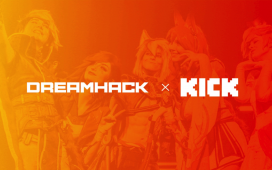
Credit: ESL/Helena Kristiansson
Mentioned in this article
Counter-Strike: Global Offensive ![]() Majors are the pinnacle of Valve’s
Majors are the pinnacle of Valve’s ![]() first-person shooting game as an esport. Two times a year, CS:GO steals the spotlight from all other esports as the top teams across the world compete to claim the title of Major champion.
first-person shooting game as an esport. Two times a year, CS:GO steals the spotlight from all other esports as the top teams across the world compete to claim the title of Major champion.
Just like the way a Major in tennis or golf holds more significance than any other event, a CS:GO Major makes even casual esports fans tune in and watch. While there are many third-party run events throughout the CS:GO esports scene, none hold the clout of a Major.
However, for CS:GO there are some third-party events, like the ESL Pro League ![]() , that have managed to carve out their own gravity. The ESL
, that have managed to carve out their own gravity. The ESL ![]() Pro League recently concluded its ninth season, and since beginning in 2015, the twice-yearly event has become a staple part of the non-Major schedule for CS:GO.
Pro League recently concluded its ninth season, and since beginning in 2015, the twice-yearly event has become a staple part of the non-Major schedule for CS:GO.
No event can match the sort of viewership a CS:GO Major produces on Twitch ![]() , but outside of this year’s first Major, Intel
, but outside of this year’s first Major, Intel ![]() Extreme Masters XIII Katowice which was played from Feb. 13-March 3, only two other days in the year have had more CS:GO viewership than the final day of ESL Pro League Season 9.
Extreme Masters XIII Katowice which was played from Feb. 13-March 3, only two other days in the year have had more CS:GO viewership than the final day of ESL Pro League Season 9.
There is no year-over-year or season-over-season comparison that can be made to the finals for ESL Pro League Season 9 with Season 8 or Season 7 because coverage for the tournaments last year were exclusively streamed on Facebook. However, following a reworked deal with Facebook Gaming earlier this year, ESL was allowed to stream the event on other platforms. That extension included a return to YouTube, where the league was exclusively shown in 2017.
The tournament’s 3.6M hours watched on Twitch from June 18-23 also came following an expansion for the Pro League that saw it increase its participation to 16 teams per region and add some live in-studio matches.
ESL’s ability to attract top level organizations such as Team Liquid ![]() and G2 Esports
and G2 Esports ![]() helped it on its way to averaging 146K concurrent viewers on Twitch for two hours of grand finals coverage Sunday that peaked at 224K. Other top broadcasting sessions throughout the weekend averaged 58K-71K CCV for 8-10 hours of airtime.
helped it on its way to averaging 146K concurrent viewers on Twitch for two hours of grand finals coverage Sunday that peaked at 224K. Other top broadcasting sessions throughout the weekend averaged 58K-71K CCV for 8-10 hours of airtime.
Despite not being broadcast on Twitch for the past two years, ESL has been able to leverage media rights deals and cultivate an environment for its Pro League that has allowed it to flourish. Now that the tournament is on gaming’s flagship endemic broadcasting platform, it’s almost as though the event had been on Twitch the whole time.














